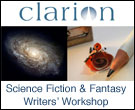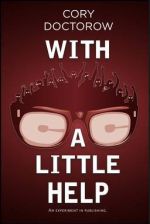An Interview with J.J. “Buddy” Connors III, M.D.
Do you believe that current intellectual property laws impact medical innovation for the worse, or the better? If you would, elaborate on your position.
Intellectual property laws don’t necessarily prevent innovation, but they can be used to take advantage of people. Many medical device companies are designed from scratch around a plan getting ideas from people and making products without adequately compensating the innovator. They know how to bring it to market, and the people with the ideas do not. Word of advice: Never draw a diagram of your great new idea on a napkin at a party.
Sounds like there’s a story there.
Too many doctors have had the same story.
Of your innovations and accomplishments, of what are you most proud?
Well, the embolic protection for carotid angioplasty and stenting was the largest business success. It was so successful that Medicare won’t pay a doctor to put in a carotid stent unless they use one of these. My technique for intracranial angioplasty was the most developmentally innovative. I also take pride in having written the first textbook in this field. Two of my former fellows are among the best Interventional Neuroradiologists in the world, and I am certainly very proud of having trained them.
If you would, please describe those two advancements a bit more.
Well, the embolic protection for carotid stenting is a pretty simple idea. When your carotid arteries are clogged up with calcified junk, you can’t really smash it aside without some of it breaking off and going downstream. That can cause a stroke. The distal protection devices, as they’re now called, are like a little net to catch the junk, so instead of it causing a stroke, you can just pull it out. They work okay, but they’re not perfect.
With the angioplasty, it was apparent that when an angioplasty ballon was inflated, it straightened out. This then straightened any vessels in the brain that had never been moved in 70 years. That was usually a recipe for disaster. For this reason I designed a balloon that was 5 mm long and allowed me to safely do procedures that were impossible before. This opened they door to the field of treatment of intracranial atherosclerosis both with balloon only as well as with stents.
Of ongoing advancements in your field, which do you believe to be the most significant?
Emergency stroke therapy. This will continue to evolve and we have a long ways to go. There are starting to be a lot of players in this, and the government and the insurance companies are starting to recognize that a large-vessel occlusion in the brain is bad news. A large vessel high-grade stenosis is worse, in terms of patient outcome than heart disease, worse than cancer, worse than any disease you can think of.
You have the reputation of taking data from other fields and applying it to the medical management of neurointerventional surgery and stroke patients. Please share some of those stories with our readers.
I take all the information I can get form any source. I read constantly and have learned quite a bit from the vascular surgery field as well as cardiology. I read about Cilostazol from studying the disease of intracranial atherosclerosis. This disease is becoming more prevalent, or perhaps just more recognized, here in the U.S., but it is incredibly common in Japan and China. To learn more, I read many obscure papers about this condition from various journals, many of which weren’t originally written in English. Cilostazol was frequently used to treat intracranial athero in Japan, and had unique properties of antiplatelet activity as well as vasodilation. Interestingly, it was already used in the United States for poor blood flow to the feet (claudication) – exactly what we would need for the brain. It has since been proved beneficial for the brain for exactly those reasons. A great many of my colleagues initially criticized my use of this. Fortunately for their patients, they’ve come around and seen the light [chuckles].
























2 comments
[…] An Interview with J.J. “Buddy” Connors III, M.D. , Director of Interventional Neuroradiology at Vanderbilt University Medical Center with Paul Clemmons […]
Great Interview. I met Buddy at ISC a few years ago. What a fireball he is! He must be mellowing, or you hired a censor.